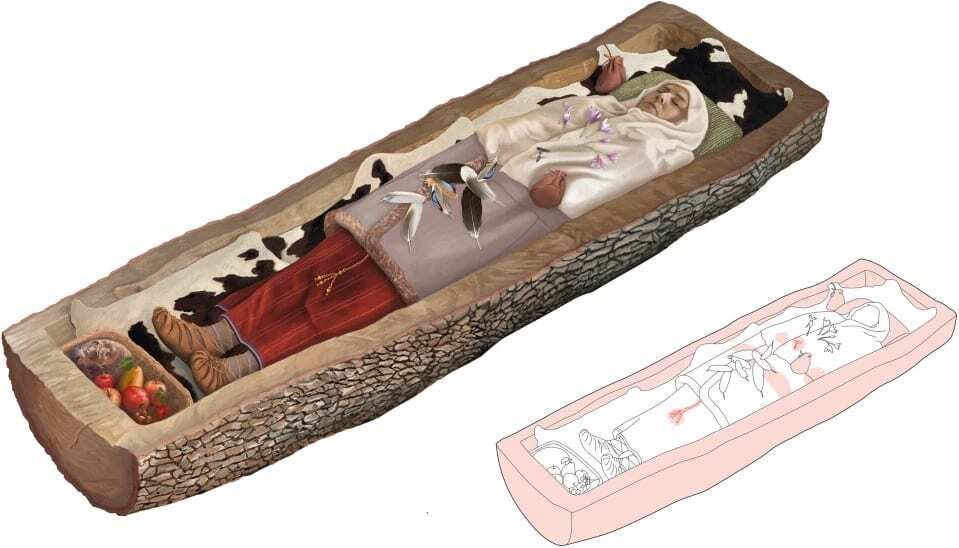In 2017, archaeologists discovered the grave of an Iron Age woman during construction works at a local school in the City of Zurich, Switzerland.
A detailed study has now revealed that the woman dates from around 250/200 BC and was buried in a hollowed-out “tree trunk coffin”. The analysis was carried out by the city’s archaeology department and shows that she was around 40 years old when she died.
Her grave is located 80 meters away from the discovery of another burial in 1903, where an Iron Age man along with his sword, shield and a lance were unearthed.
In a press release issued by Stadt Zurich, they state that when the woman was originally found, an isotope analysis of the woman’s bones revealed that she had “been brought up in Zurich, likely in Limmat Valley.”
Archaeologists also uncovered an array of ornate items and grave goods, including a delicate bronze belt chain, pendants, bronze bracelets and a rich chest ornament made with pearls of amber and blue and yellow glass.
The area is known for being rich in archaeology, but burials normally date the early Middle Ages around the 6th century AD, making the woman’s burial a valuable insight into life and burial practices during the late Iron Age of the region.
Header Image – Artist’s impression of the woman in her coffin. Credit : University of Zurich – Archaeology Department





